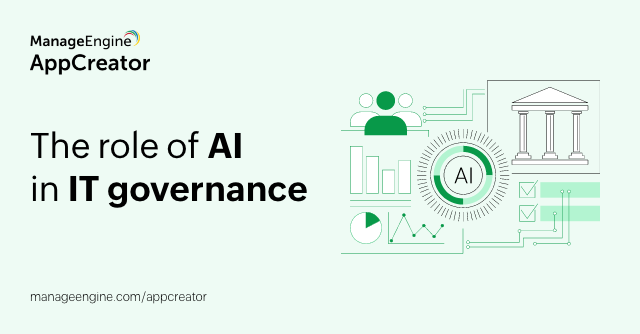- HOME
- Digital Transformation
- What is enterprise application development?
What is enterprise application development?
- Last Updated: April 16, 2024
- 253 Views
- 6 Min Read

Enterprise application development signifies engineering mission-critical, complex, and scalable applications for use by large enterprises.
Contemporary enterprises are digitized for the most part, and their business processes are highly automated. For their functioning, they require applications that serve diverse purposes.
i) Applications for intra-organizational operations: These are applications that are critical to the day-to-day functioning of the enterprise's teams. These are mostly custom-built, with off-the-shelf solutions being a rarity in this category.
ii) Applications for client-facing operations: These are applications shipped to the customer built as per their requirements and suited to their specifications. These are engineered according to the specifications provided by clients.
When it comes to software that will be adopted at an enterprise, a one-size-fits-all off-the-shelf solution won't work. This is because, due to their sheer size, enterprises are complex behemoths. For each project undertaken at your typical enterprise, there are numerous stakeholders—or teams—involved. Each team has its own set of people with unique attributes, requirements, and responsibilities. This variety mandates that enterprise applications need to be architected specifically for each department based on its requirements.
What does enterprise application development involve?
Developing scalable and complex applications designed for enterprises involves a lot of things.
Understanding enterprise needs
Enterprises have distinct business processes and modes of operation. Understanding enterprise needs means getting to know the enterprise's key performance indicators (KPIs), metrics, goals, and objectives. The strategic objectives of the enterprise need to be understood by all stakeholders—both internal and external. This understanding will assist in engineering applications that fully address the unique demands of the enterprise in each of its endeavors. Also, the domain of the enterprise dictates requirements for efficient operations.
Choosing the relevant approaches and technologies
There are a multitude of enterprise application development methodologies and technologies at the disposal of enterprises today.
Software development methodologies
From the antiquated waterfall model to the agile model, software development methodologies have come a long way.
Today's enterprises need effective solutions, and the agile model, with its incremental, prototype-based, and feedback-driven development, outperforms the waterfall model's procedural approach to application development.
Tech stacks
Tech stacks have matured a lot over the years.
Initially, there was the monolithic architecture, where the input logic to the data management interface was all intertwined. Then came the client-server model, where the user interface (the client) was separated from data management (the server). Next came the three-tier architecture, layered based on the presentation, logic, and data layers. These are the Windows Apache MySQL PHP (WAMP) and the Linux Apache MySQL PHP (LAMP) stacks. And today, we have the microservices architecture, where Docker is used for containerization and Kubernetes is used for orchestration. This approach provides scalability and agility.
While developing applications for enterprises today, you need to choose the right development methodology (agile for projects with constantly evolving requirements) and a suitable tech stack.
Ensuring compatibility with prevalent systems
Enterprises will already have prevalent software systems in place, developed either by themselves or by third-party vendors. While developing new applications for the enterprise, it is vital that the new applications are compatible and can be integrated with the existing enterprise application software. This will enable the newer applications to avail the existing data and software architecture and integrate with them (including interfacing with existing operating systems), preventing data loss, waste of effort, and enabling data integration. Data integration is guaranteed by the enterprise application integration system. Point-to-point integration is ideal when considering compatibility with prevalent systems in enterprise organizations.
Attributes of ideal enterprise applications
Scalability
Enterprises are huge in size and cater to hundreds if not thousands of employees and numerous external stakeholders. There are also constant changes in the magnitude of users served by an enterprise. Therefore, it is vital that the applications used by enterprises for their internal and stakeholder-facing functions scale automatically with the changing number of users. The ideal enterprise application should be capable of both upscaling (accommodating additional users on top of the prevalent infrastructure) or outscaling (horizontal expansion by adding more machines and instances).
Reliability and robustness
Mission critical is a term that aptly describes the importance of applications used by enterprises. Enterprise applications should be fully persistent under all conditions: in the face of outages, show-stopping bugs and incidents, and human error. In short, the ideal enterprise application should be fully reliable at all times. High reliability is crucial in mission-critical enterprise applications, where outages and disruptions in services or a software tool will lead to huge losses and unnecessary resource expenditure. Enterprise application software must be reliable and robust.
High availability
Enterprise applications need to be available to stakeholders at all times. Typically, enterprise applications are assured 95 to 99.99% availability by their vendors. Similar to persistent reliability, high availability is essential for smooth and hassle-free continued operations of businesses.
Security
Enterprise applications handle sensitive and confidential data. To safeguard it from unauthorized access and protect it from falling into the wrong hands, data encryption approaches need to adhere to stringent security mechanisms and regulations. Adherence to such standards will guarantee that stakeholder data is safe at all times, as these standards mandate the enforcement of several security mechanisms, such as encryption at rest and the transfer of data through secure channels. Data security is of utmost importance from an enterprise standpoint.
How to develop enterprise applications
The conventional method
Build applications from the ground up, leveraging the expertise of dedicated IT teams.
Developing enterprise applications requires several steps, such as:
i) Elucidating the requirements from the stakeholders.
ii) Designing the application, including ideating how it would function and operate.
iii) Choosing the right technological stack—programming languages including the front-end and the back-end—to develop the applications.
iv) Developing the applications.
v) Testing.
vi) Deployment and maintenance.
You also need to consider the software development methodology while developing enterprise applications. Traditionally, the waterfall development model—a sequential model for engineering applications—was used. However, it now has more efficient successors such as the agile model, including the rapid application development model, which focus on incremental prototype-driven application development. The agile model builds upon the waterfall model and allows for much easier change incorporation whenever change crops up, unlike the waterfall model, which is rather rigid when it comes to accommodating change.
Low-code
Another notable type of technology that can be used for enterprise application development is low-code. A rapid application development model, low-code means using little code to engineer applications. Low-code platforms provide visual, drag-and-drop builders to develop applications. When custom logic needs to be implemented, it can be done so using the scripting languages provided by the low-code platform.
Low-code platforms allow even line-of-business users in enterprises to develop applications all by themselves without being dependent upon the IT teams of the enterprise. This approach saves enterprises a lot of time and money, since with low-code, IT teams can deliver enterprise applications in a fraction of the time when compared with traditional application development approaches. Low-code platforms enhance organizational agility and efficiency. They are a viable option for enterprises to engineer cutting-edge applications rapidly.
Key takeaways
While engineering enterprise applications, choosing the optimal and relevant technologies alongside pertinent approaches will ensure that applications are delivered in time and according to stakeholder requirements. Integration of newly engineered enterprise applications with legacy systems will prevent loss of effort and legacy technology. Scalable, reliable, robust, highly available, and secure applications will guarantee optimal enterprise operations.
Enterprise application development comes with its own set of challenges. However, given the right approach and the choice of the right methodology, this process can be a win-win situation for all stakeholders involved.



